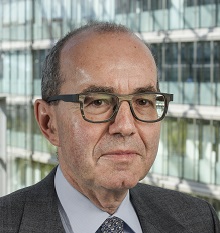Thomas Cueni, IFPMA Director General, spoke to BBC World Service Marketplace Morning Report about the efforts and challenges to produce and deliver a vaccine for COVID-19
Victoria Craig One of the keys to getting economies back to some form of normalcy is a vaccine. The US said that it could begin delivering one within 24 hours of FDA approval. But what about the rest of the world?
To put this in perspective, global vaccine production (excluding the seasonal flu) is estimated today between 3 and 5 billion per year, and there hasn’t been big surplus capacity because vaccination programs, for children and for the elderly, must continue. Therefore, what we are talking about is unprecedented speed. You need to establish new manufacturing plants. You need to scale up – without knowing whether your vaccine will work. And then you need to work on the logistics. Therefore, this is still one of the most challenging questions and I wouldn’t be surprised if we encounter obstacles which we don’t know of yet. For example, you need syringes, not just the vials.
Some organisations are doing global vaccine readiness surveys, because some countries, even among industrialized countries, may not really be fully up to the task of trying to immunize 80% of their population because this has never been done it the past.
Victoria Craig Is there enough time to get those various components where they need to be before a vaccine is ready to be distributed?
I think of two remarkable features of today’s collaborative efforts is that everybody’s talking to everybody else. And if one vaccine doesn’t work you can bet that there will be glass vials available, which will go to somebody else. I’ve seen this in the area of treatment development where we have seen announcements of big companies offering their manufacturing capacity to others. For example: Pfizer, collaborating with Gilead on Remdesivir and Regeneron signing up with Roche. That’s why I think we will be able to sort out those logistical problems.
It is daunting, in particular in developing countries but we will have vaccines reaching out communities at different times. And they will benefit from the experience and the expertise of the likes of GAVI, the Vaccine Alliance or UNICEF who have done this very successfully for their immunisation programmes.
Victoria Craig We also heard this week from the charity Oxfam, that wealthy countries representing 13% of the world population, have laid claim to more than half of the promised doses of an eventual vaccine. If local production ramps up in countries around the world where it’s harder to get vaccines. Could that alleviate some of the problems around the inequality of distribution?
I share the Oxfam objective of equitable, available and affordable access around the world. However, I do not share their analysis because they leave aside the vaccine capacity of India. India is one of the largest global vaccine manufacturers in the world. India and China would already have about one third of the world population covered. However that is not included in Oxfam’s analysis.
One of our concerns is how to make sure that you also reach African countries. That is why the mix of high-income countries, buying into the COVAX Facility, cross subsidizing poor countries is so important.
Many people thought that the region most exposed and most vulnerable to COVID-19 would be Africa. However, when we look at it closely, the US system has been hit, much harder, as well as many parts of Europe, parts of Latin America. One reason may be that the African population is much younger and that they are more used to deal with pandemics.
In any case, we really need to make sure vaccines reach to people who need them.
Listen to the full interview:









